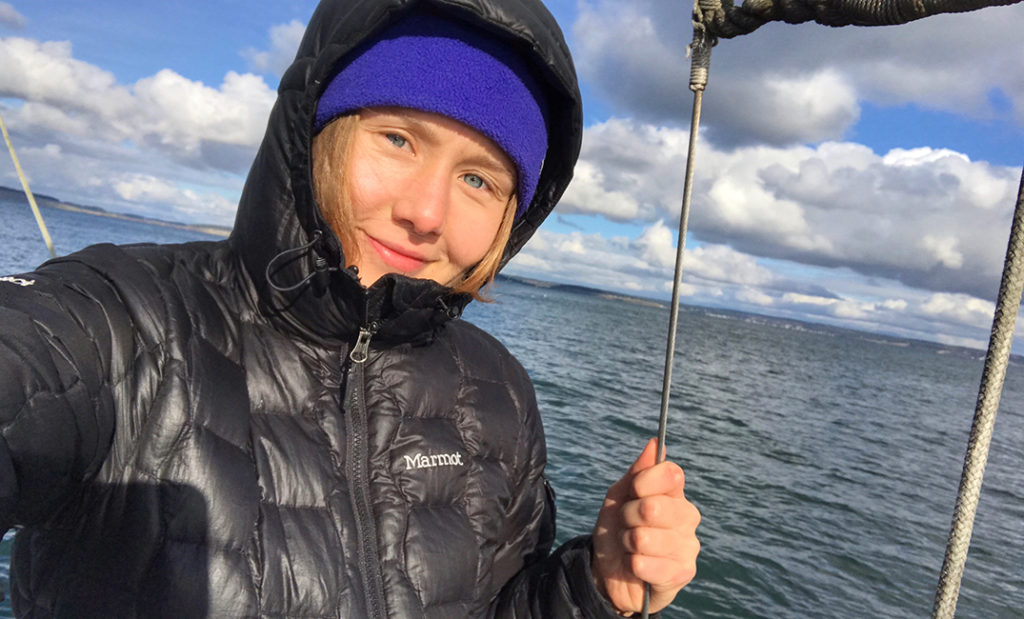An account from a field biologist turned statistician
By Marena Salerno Collins

It’s 5 a.m. and the sun has just started rising. We jump in the car with our coffees and mentally prepare ourselves for a full day on the cliff. A cooler of sandwiches, a fully charged computer, hats, sunscreen (reef safe, of course), our equipment, camp chairs, and a constantly buzzing VHF radio. We hear that the southern resident killer whales (SRKW) will be heading south past Lime Kiln and we are eager to catch them at our site just down from Landbank on the west side of San Juan Island in Washington State.
Fast forward 10 hours and, despite our best efforts to avoid it, we are sunburnt, thirsty and, for those of us who spent most of the day looking through binoculars, dealing with temporary blurred vision. There is a sense of accomplishment in the car on the way home after a full day like this one. We all feel some combination of tired, happy, curious, excited, and hungry. This was a good day in the field. It was full of mental challenges, problem-solving, pushing the boundaries of physical stamina and team accountability. It left me feeling drained but inspired, sleepy but full of life, and most importantly, spending the day with the SRKWs always motivates the marine conservationist in me.
Days in the field are days collecting the data, but what happens after you have the data? This is a question I asked myself almost daily when in the field. What will happen to each one of these data points? What impact can the project have without the analysis? As an organization, Oceans Initiative is expert in bridging this gap but so far, my part in analyzing data had been limited by my lack of quantitative education. It turns out that I wanted that education. I wanted to personally see the whole process through, from data collection, to analysis, and onto publication. This, along with the encouragement, support and advice from Oceans Initiative’s leadership team, is what led me to the graduate program I am currently in—a Statistical Ecology Master of Science at the University of St. Andrews. The University of St. Andrews, world-renowned for its marine science department and the home of the Centre for Research into Ecological and Environmental Modelling (CREEM), is a mecca for some of the most influential people in conservation science.
Compared to the field days, my days as a graduate student are challenging and inspiring in drastically different ways. Instead of being on the side of number input (or data collection), I am now on the side of statistical output. If I put my data points in, use what is significant, leave out what isn’t, correct for bias, scale for accuracy, and model for the best representation, what is the output? For those of you with any sort of mathematical or statistics background, you will know that it is all about the three-component machine—input-process-output—or what we like to call the “algorithm of the analysis.” Learning about the intricacies of processing data has also helped me as a field biologist because now that I know how to use the data, it is clearer to me how we should be collecting it.
There are still days that I miss the field and I hope to work on more projects that include long hours in the sun with magnificent creatures. However, for now, I am inspired by the big picture of why, as scientists, we do what we do and the power of data, data analysis, and the endless potential in the field of ecological statistics.
“Look deep into nature,
and then you will understand everything better.”
— Albert Einstein

